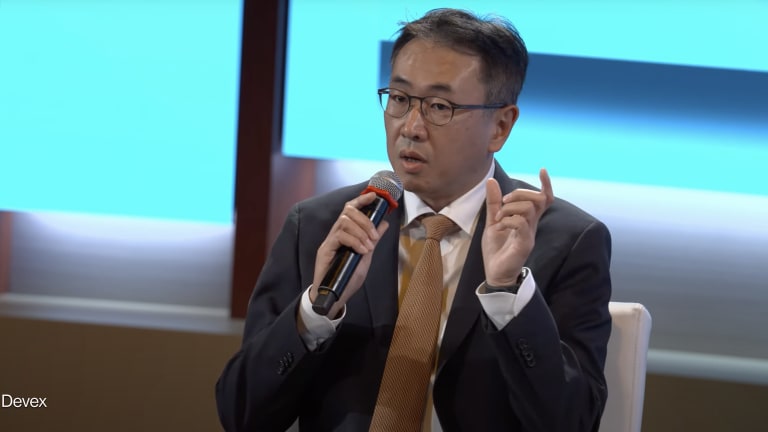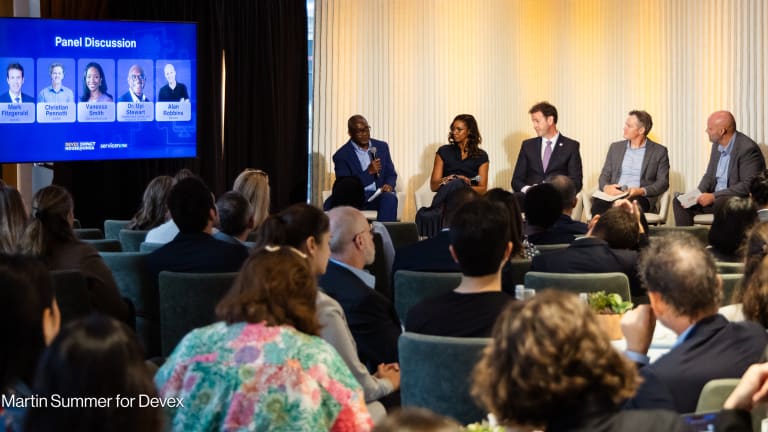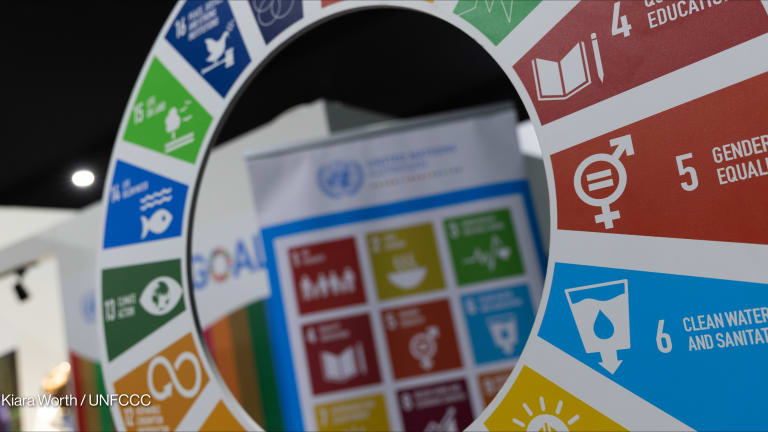
An enabler of seven of the United Nations Sustainable Development Goals, financial inclusion is key for progressing global development. Financial inclusion and digital equity are, in turn, intrinsically linked. As the world is quickly going through a digital transformation, progress within both areas is becoming increasingly important. According to the Global Findex Database 2021, the increase in account ownership witnessed in recent years in sub-Saharan Africa was largely due to the adoption of mobile money.
“You can't have more inclusion without more access to financial services,” said Andrew Torre, Visa’s regional president for Central Europe, Middle East and Africa, or CEMEA. “And we know that the more people are digitally and financially included, the better the outcomes. It uplifts communities and allows businesses and individuals to thrive.”
Digital financial access came to the fore during the COVID-19 pandemic. “We saw that the governments and societies with more digital access were far more resilient and could move quicker. With digital access you can get funds to people, you can get funds to small merchants, and you can get funds to communities that need them,” Torre said.
And the pandemic advanced the use of digital financial services. A staggering 40% of all adults who made a digital payment after the onset of COVID-19 in a low- or middle-income country, did so for the first time in their lives.
Speaking to Devex, Torre explained how Visa is working to address the significant remaining financial inclusion gap through a wide range of initiatives targeting both businesses and private consumers.
This conversation has been edited for length and clarity.
Why is digital equity and inclusion so important across the CEMEA region?
It's important across every region, but for us, it's a massive opportunity to bring more people in. In order to have the impact Visa seeks to have, we have to focus on inclusion every day across our business, and we do that in many ways.
One of our clients, a digital bank in Nigeria, launched a debit card with an application that had a massive take-up very quickly. New consumers who just wanted a debit card with a very simple user experience suddenly had a place to store funds, and we know that brings ripple effects — allowing people to plan, save, and have access. We also know how tightly linked that is to credit. Economies that switch to digital can boost annual GDP by as much as 3 percentage points according to BCG. So it's important to connect these bigger trends we see with the work we do every day to help partners bring more consumers and sellers into the ecosystem.
What are the core aspects of digital equity and inclusion that impact this issue?
On the consumer side, it's the ability to cheaply, simply, and easily get a type of savings account and to make and receive payments. It also has to be done with trust and convenience, and you've got to have a really good user experience.
Then you also need to make sure people get the right level of support and financial education, and we support this across many of the economies where we are present. People's money is important, and we feel like we have an obligation to give them the financial literacy, tools, and wherewithal to manage their money.
It's equally important on the seller side. As a small seller operating in cash, you're constrained. If you don't have access to credit, you're limited in what your inventory is, what you're able to sell, and who you can reach. If you're digitally excluded and you can only sell to people face-to-face, it's harder.
Small sellers are the lifeblood of economic communities across the globe, and especially in the communities where we work in sub-Saharan Africa. If you're going to solve inclusion and access, it has to start with these smaller sellers.
What are some examples of how Visa's business is helping to drive digital equity and inclusion?
For small and medium-sized enterprises, we’re developing solutions that work no matter where they are. For example, we realized that merchant terminals don't work for many SMEs, so we reimagined the point of sale by creating the ability to provide a terminal as a phone software service. It allows a small seller to be able to accept payments, face-to-face or from someone who's not there physically. And when you provide that technology, it radically brings down the cost since you get rid of a piece of equipment.
In 2020, we made a commitment to digitally enable 50 million small businesses by the end of 2023, and provide education or work with partners to achieve that. At the end of fiscal year 2022, we were standing at just over 40 million globally. One example is the Visa Everywhere Initiative, an open innovation program that helps startups gain access to Visa expertise and platforms.
On the consumer side, we committed to bringing access to 500 million people, as part of the World Bank’s Universal Access goal by 2020, a goal we achieved in 2019. And we work hard each and every day to further include people, working with many great partners. STC, a big mobile network operator, is one great distribution partner whom we’ve worked with to create a digital version of a card to use on your phone. We’ve also worked with M-PESA in Kenya and Tanzania, so that someone using their app has access to a Visa credential and can shop at any of our 80 million merchants across the globe.
Opinion: The gender gap won't close without digital financial equity
"While there appears to be progress in financial inclusion, we must carefully consider how financial digitization risks excluding women from the global economy," write the heads of Women's World Banking and the U.N. Capital Development Fund.
The value of partnerships and trust are two important takeaways from a recent Devex and Visa report. How does Visa foster trust across its business and partnerships?
As a global company, Visa’s brand signals trust that binds together the 3.9 billion credentials and 80 million merchant locations worldwide. Our legacy trust extends across countries, cultures, and languages.
What we build through our partnerships and through the ecosystem has to be based on trust and security. We proactively deploy advanced technology to make the movement of money safer and seamless and ensure data is not vulnerable, no matter where transactions take place.
We also invest in educational campaigns and partnerships to promote safe, responsible use of digital payments.
Across CEMEA, we’ve introduced gamified learning concepts to educate consumers on risks. But we have to be on it every day, at every level of society. At every juncture in our system, from the seller to the merchant bank, we have very rigid standards around how data is protected. If we would compromise that, we’d lose trust.
Financial literacy and financial inclusion are strongly related. How is Visa working to improve financial literacy across the CEMEA region?
We have 20 offices around the CEMEA region, and in each of these we support financial literacy initiatives together with partners. We have extended financial literacy programs across 48 countries across the world, offering practical money and business skills to millions of consumers, small business owners, and potential entrepreneurs. The courses are free and available in four languages including English, Arabic, French, and Spanish. And we recently launched a “financial football” online game, globally, which brought gaming to financial education to make it fun, free to use, and accessible in the lead-up to the FIFA World Cup in Qatar. We’ll also be working with the Qatar Foundation on some programs to support financial education and financial literacy across Qatar as part of our commitment to leave a positive impact on the local community.
The Devex special report “Bridging the Divide: Skills for Digital Financial Equity and Inclusion” produced in partnership with Visa, provides more insights on what’s needed to realize digital financial inclusion. Read the full report here.








